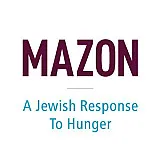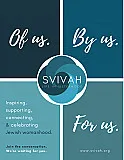Break the Middle Matzoh
We read in the Torah: “It is commanded that you should eat unleavened bread and for seven days there shall be no leavened bread seen with you. And you shall tell your children in that day, saying, ‘This is done because of that which God did for me when I came forth out of Egypt for with a strong hand has God brought you out of Egypt.’ You shall keep this ordinance in its season from year to year.”
There is a tradition of searching for additional meaning in the text of the Torah. Since the Hebrew scrolls were written without vowels, Rabbis have read the commandment, “You shall observe the feast of Matzoh” and realized that by changing some of the letters, the word “matzoh” becomes “mitzvoh.” A mitzvoh is a commandment. But the word also means a good deed and we are meant to link our rituals with doing good in the world.
On Sabbaths and holidays, we traditionally have two loaves of bread, a symbol of the double portion of “manna from heaven.” On Passover, we have three matzot on the table; the third matzoh is the “bread of affliction” reminding us of our enslavement in Egypt. We now take the middle of the three matzot and break it in two. By breaking “bread” we signify hospitality and invite all who are hungry to join us. The smaller piece of matzoh is replaced between the other two matzot. The larger piece is wrapped in a napkin — symbolic of our ancestors wrapping their dough in their garments when they departed Egypt — and set aside as the “afikomen” to be eaten after the meal. Together we say the words which join us with our people and with all who are in need.
All recite these words:
Behold the Matzoh, bread of poverty and affliction which our ancestors ate in the land of Egypt.
Let all who are hungry come and eat. Let all who are needy share the hope of this Passover celebration.
Next year may all men and women be free.
The wine glasses are refilled
Inspired to create
your own Haggadah?
Make your own Haggadah and share with other Seder lovers around the world
Have an idea
for a clip?
People like you bring their creativity to Haggadot.com when they share their ideas in a clip
Support Us
with your donation
Help us build moments of meaning and connection through
home-based Jewish rituals.
OUR TOP CONTRIBUTORS
Passover Guide
Hosting your first Passover Seder? Not sure what food to serve? Curious to
know more about the holiday? Explore our Passover 101 Guide for answers
to all of your questions.






















